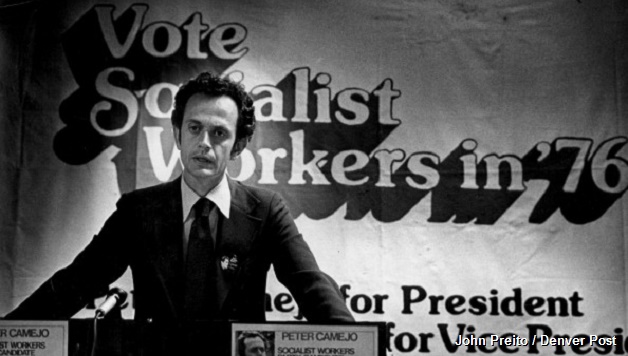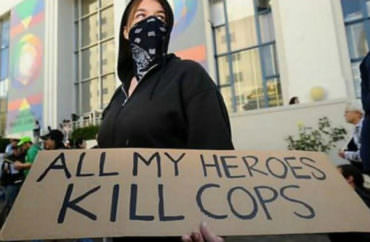
Joshua Clover
Someone asked me for my opinion on the Afterword to the 2019 edition of Joshua Clover’s “Riot. Strike. Riot: The New Era of Uprisings” that answers his Marxist critics. I am at a disadvantage since I never read his book. I still don’t have plans to read it—life is too short—but I will take a stab at it based on a reading of a Verso blog article he wrote in defense of the Yellow Vests, who he sees as emblematic of riots as the working-class struggle of our time, just as the strike was in an earlier period. In essence, he sees the strike as the embodiment of class struggle at the point of production that might be typified by the Flint sit-down strike of 1936-7, while the Yellow Vests express the struggle that erupts at the point of circulation, ie., the marketplace. Instead of the worker as producer, he is focused on the worker as consumer. He writes:
There is little reason to be confused; the Gilets Jaunes movement has in its form developed with laboratorial clarity. It is a textbook riot. A labor protest, to state the obvious, features labor-based demands, workers in their role as workers fighting to set the price and conditions of their labor — an action unfolding in the context of production, the provision of goods and services, the creation of value. The classical riot as it arises in medieval and early modern Europe is the form of collective action that
1) struggles to set the price of market goods;
2) features participants with no necessary kinship but their dispossession;
3) unfolds in the context of consumption, featuring the interruption of commercial circulation.
In the 14th through the 18th centuries this commonly involved a community mobilization directing itself at a baker or more often grain merchant, demanding they sell their goods locally and affordably. It was a struggle in the marketplace over the cost of self-reproduction. It will be obvious that the Gilets Jaunes movement follows this protocol quite closely. Not because it is violent and disorderly, insulting the propriety of the state — the bourgeois measure of riot — but because it begins with and sustains itself on the demand that a subsistence good must be sold at a lower price for proletarian reproduction to continue. It is a sign that the customary compact between classes is in crisis. The bread riot has returned.
Except that it has not gone anywhere. In particular, riots over the costs of compulsory transport are a fixture of the present, from the withdrawal of fuel subsidies that provoked nationwide riots in Haiti to the repeated gasolinazo protests of Mexico and elsewhere to the insurrectionary force unleashed by an increase in bus fares in Brazil. Once transportation becomes a necessity for survival, its costs become part of the subsistence package and a site of contest. The focus has been relentless. “Roundabout protests,” one participants calls the actions on a road outside Toulouse. The protestors gather there to block traffic. Elsewhere they attack tollbooths, auto makers — all the physical manifestations of circulation.
Against this analysis, which is purported to be the one that most closely matches to the concrete conditions workers face today, there are those out-of-date dogmatic Marxist metaphysicians who refuse to face reality. He writes:
The skeptical responses to the book, often appearing in legacy socialist journals, have been magnetized without fail according to the principle that the strike must be defended. Some fraction of these defenses have been little more than oaths of fidelity to what C. Wright Mills called sixty years ago the “labor metaphysic.” They are regularly compelled to remind us of the truism that capital remains vulnerable at the point of production.
Since he doesn’t name them, I had to do a little research to track them down. He must be referring to the British SWP’s review that reminded him that “the end of the strike are much exaggerated.” Furthermore, “They have been at the heart of epic struggles in Greece, the French spring of 2016 and even the battles of the precarious or gig economy involving logistics workers in Italy and the UK in recent months.”
Links, the magazine of the Socialist Alliance in Australia, also had problems with the book. Its reviewer Ben Peterson wrote a useful summary of Clover’s arguments and reinforced my decision to avoid it like the plague:
The argument Riot-Strike-Riot is not as complicated as its writing style, which makes ample use of unnecessary academic jargon and unexplained references to classical mythology, would imply. In short Riot-Strike-Riot argues that as capitalism has evolved, the predominant form of class resistance has evolved with it. In capitalism’s early phases, circulation and trade was the central aspect of capitalism. Therefore ‘Riots’ in the form of bread riots or mob enforced price setting were the predominant form of resistance. As industrial capitalism developed, the central dynamic of struggle changed, and the new form of proletarian resistance became the strike. However, since ‘1973’, the centrality of production in capitalism has ebbed, and circulation is now key- thus we are seeing a return to a new era of riots, “riot prime”.
He also makes a critical point, namely that Clover underestimates the importance of strategy. If the goal is to seize power, abolish capitalism, and construct socialism, the focus on rioting seems limited to a tactical approach and one rather limited at that. Peterson writes:
Such a strategy implies that radicals should not focus on union struggle, or winning over multiple layers of the broader working class, but instead aim to build up a stronger organisational ability to create blockades and occupations. The goal is to interfere with the distribution of the economy. By holding things up, it creates pressure to win demands. This will bring activists and the surplus population into conflict with the state. As this struggle grows, those activists must develop a new commune to win this battle with the state, and end class antagonisms.
From what I can glean from the reviews, Clover’s idea of a “new commune” does not have much to do with Marx or Lenin. Indeed, as a contributor to Commune Magazine (they don’t identify an editorial board but I assume he is a mover and shaker), he must identify with their self-definition in an article in the initial issue titled “Introducing Commune” that disassociates itself from the “legacy socialist journals” and only promises to “clarify and communicate some important contemporary ideas about capitalism and its opposition.”
In the latest issue, Clover holds forth on “The Year in Struggles”. It naturally applies the questionable criteria of circulation and production found in his book. He sees the burning of the metros in Santiago as another example of the struggle over the right to an affordable transportation in the circulation sphere. The Yellow Vests rioted over a gas tax and students in Chile rioted over a four-cent increase in the price of a metro ride. And even when Blackjewel’s laid-off miners are involved, they are not at the point of production but join the others in the circulation sphere as a result of being forced to struggle over back pay. The miners illustrated the “The form through which this oldest of production demands, pay us you motherfuckers, can be realized in this moment is beyond production, pure circulation struggle.”
It is somewhat surprising that he cares that much about the miners’ fight for back pay given the “Introducing Commune” take on jobs: “And seriously, who wants full employment? On the list of things we might demand, if we believed demands made any sense, this does not even rank. Wage labor is a misery.” Wage labor is a misery? I guess that’s why Clover decided to become a poetry professor.
Reading through his article, you come away with the sensation that he is really into particular struggles but has little interest in thinking through how they can be generalized. As a rule of thumb, local struggles do not seek national solutions, let alone the international transformation that classical Marxism always embraced—especially Trotsky.
If Clover uses unnecessary academic jargon and unexplained references to classical mythology, you can always go to his Twitter account that lays things on the line:
“The anarchism of the Paris Commune for all its basis in handicraft consciousness would render it closer to communism than would the socialism of Bolsheviks the Soviet Union.” (January 5, 2020)
“Russian anarchists in a huuuge comeback its like Dostoyevsky all over again out here.” (May 30, 2020)
I hadn’t given much thought to Commune Magazine ideologically until someone involved with Cosmonaut, a website produced by young Marxists, disparaged it as autonomist Marxism, a term that I see as synonymous with anarchism.
This fetishizing of riots is exactly what people like Toni Negri were doing in the 1970s and Joshua Clover is apparently following in his footsteps. Negri’s autonomist followers were mad dogs, shooting a Communist professor in the kneecap and generally undermining the mass movement through their ultraleft bullshit. I guess the best thing you can say about Clover is that he is largely ignored.




